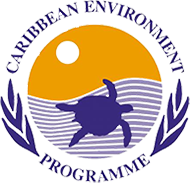Mangroves in the Mesoamerican Reef Region (MAR) and the Wider Caribbean are the economic foundation of over 134 million people living in the coastal regions. Due to their close relationship with other ecosystems, such as coral reefs and seagrasses, mangroves and the ecosystem services they provide are the conservation pillars of coastal ecosystems.
The vast spreading coral reefs of the Caribbean alone consist of over 60 species of corals and 1,500 species of fish. Both mangroves and coral reefs are crucially important for local economy, creating income for tourism, fisheries, pharmaceutical industries, as well as protecting the coastline and vulnerable communities against the impacts of climate change, erosion, flooding, hurricane and storm damage.
However, these vital coastal ecosystems of the Caribbean face serious pressures. Mangroves are threatened by changes in land use, urban development, natural events, industry, and extraction of timber products, whilst the region’s unique coral reef ecosystems face a new threat: Stony Coral Tissue Loss Disease (SCTLD). First discovered in Florida in 2014, SCTLD is a rapidly spreading disease which has now spread to the Caribbean affecting over 20 species of hard corals in the region.
In order to sustain the livelihoods of the Caribbean people and protect them from floods and hurricanes, to which the region is highly vulnerable, it is vital to conserve these coastal ecosystems. The United Nations Environment Programme (UNEP) Cartagena Convention Secretariat works to improve the management of marine protected areas (MPAs) and enhance marine biodiversity in the region. The Secretariat, through its Specially Protected Areas and Wildlife (SPAW) Sub-Programme, aims to continue working towards establishing a functional ecological network of SPAW-listed MPAs covering interconnected marine and associated habitats and ecosystems for restoring and sustaining the health of oceans. This directly contributes to the objective of the ACP MEAs III programme to improve the enforcement of and compliance with Multilateral Environmental Agreements related to biodiversity.
In October 2021, the UNEP Cartagena Convention Secretariat and the Gulf and Caribbean Fisheries Institute (GCFI) launched a new White Paper to help regional partners make informed decisions about coral disease monitoring and response to the newly identified SCTLD. The White Paper was launched on 25th October 2021 with approximately 69 persons in attendance. The questions raised by participants, along with their active participation, demonstrated keen interest and concern about the topic, with proposed recommendations focusing on the need to follow up with capacity building efforts and a more integrated and cross-sectoral approach in addressing challenges jointly in the region. The new paper provides a comprehensive overview about the coral disease – from its distinguishing characteristics and appropriate monitoring strategies, to its impacts on coral reef ecosystems and threat to economies in the region. It presents a series of recommended actions that can be adopted by stakeholders at various levels in the Wider Caribbean to help reduce the impacts of this coral disease.
In addition to this, the Cartagena Convention Secretariat together with the Ridge to Reef Integrated Management Project of the Mesoamerican Reef ecoregion (MAR2R/CCAD/WWF-GEF) and Mesoamerican Reef Fund (MAR Fund) hosted a virtual launch on 1st December 2021 of the Manual for the ecological restoration of mangroves in the Mesoamerican Region and the Wider Caribbean with a total of 159 attendees. The session was opened by the UNEP Cartagena Convention Secretariat, followed by opening remarks from Ms. Maria Jose Gonzalez, Executive Director of the MAR Fund and Mr. Jair Urriola, Executive Secretary of the Central American Commission for Environment and Development (CCAD). Representatives from the African, Caribbean and Pacific Group of States (ACP) were also in attendance, given the interlinkages between protected areas and the SPAW Protocol. The session was interactive, emphasising that the Manual was designed to be used by government entities, civil organizations, the academic community, the business sector, members of civil society, indigenous peoples, and local communities alike. It was further highlighted that each restoration needs to be tailored to the specific local context and that it is indispensable to include communities as restoration efforts really depend on them. The manual contributes to strengthening local, national, and regional capacities for the ecological restoration of mangroves and the ecosystem services they provide in the Wider Caribbean region.







